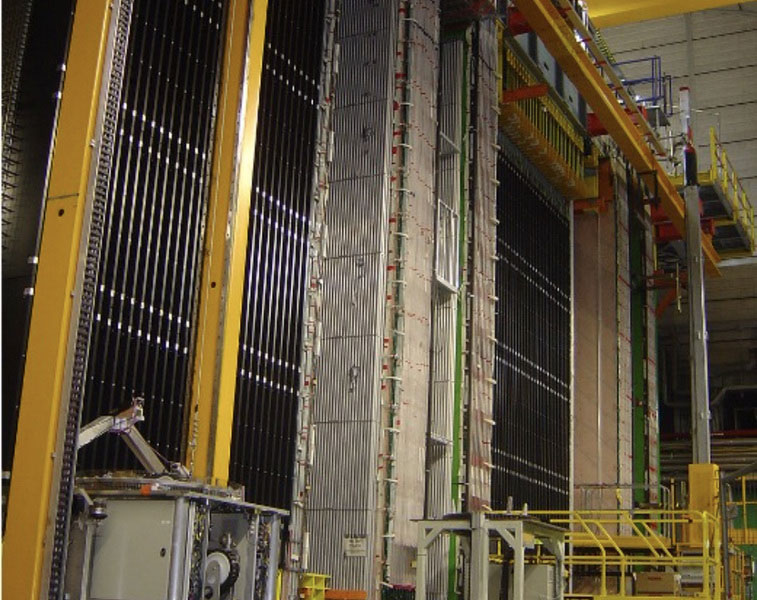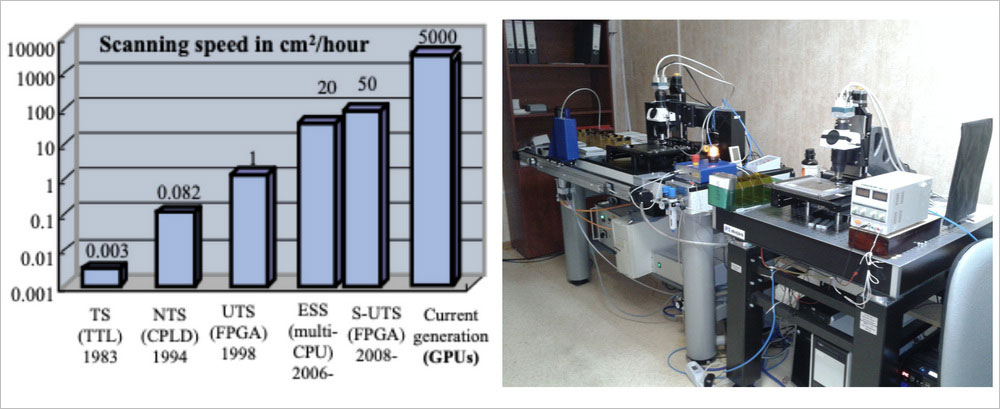OPERA ― 20 Years Later
News, 13 July 2022
The Joint Institute is actively developing the neutrino programme. The construction of the Baikal-GVD deep-underwater neutrino telescope is underway, JINR scientists are taking part in the international neutrino experiments. This year marks exactly 20 years since the group of JINR scientists joined the search for tau neutrinos in the frames of the international cooperation OPERA. In the frames of the experiment, muon neutrino oscillations have been discovered in tau neutrinos. JINR scientists took part in the development of the Target Tracker (TT) detector, proposed software for this detector and an accurate method of data analysis, and also participated in other works.
The work done within the project was highly appreciated and received the First Prize for 2021 among papers in the section “Experimental Physics Research”. Head of the Sector of Experimental Neutrino Physics of the DLNP Experimental Department of Particle Physics, Candidate of Physics and Mathematics Yury Gornushkin talks about the history of the participation of the Joint Institute’s scientists and their contribution to the discoveries made by them.
The OPERA experiment was proposed in 1998 with an aim to prove the existence of νμ ↔ ντ oscillations. The flux of muon neutrinos produced in interactions of protons with the target at CERN was directed to the Gran Sasso underground laboratory located in Italy, 730 km away from Geneva. There was the detector for tau neutrino registration At the time of the creation of the experiment, there was no direct evidence of the transformation of muon neutrinos into tau neutrinos.
Tau neutrino detection is an extremely complicated task. For the first time, this was done only in 2001 in the DONuT experiment (FNAL, the USA) with the ECC (Emulsion Cloud Chamber), a special emulsion detector. The search for tau neutrinos in the OPERA experiment was an even more complicated task ― neutrinos were to be detected at a significant distance from the source, where their flux is significantly weakened.
In the early 2000s, the construction of a hybrid facility with a target (ECC) and electronic detectors got started (Fig. 1). The facility had unprecedented characteristics. Weighing about 1200 tons, it reached an exceptionally high spatial and angular resolution, which was about 1 µm and 0.5 mrad respectively. This gave the possibility of efficiently identifying charged-current tau neutrino interactions, i.e. directly detecting the tau lepton and its decay (see below one of the reconstructed events).
 Fig. 1. OPERA detector in Gran Sasso, the underground laboratory of INFN
Fig. 1. OPERA detector in Gran Sasso, the underground laboratory of INFN
The major part of data was gathered from 2008 to 2012. In total, 20 000 neutrino interactions were detected in the detector. Using special selection criteria and advanced analysis methods, including neural networks, candidate tau neutrino interactions were selected. In view of two expected background events, 10 candidate events for tau neutrino interactions were found using a multivariant analysis. The confidence level of the detection exceeded 6 standard deviations. Thus, muon-to-tau neutrino oscillations were discovered, and the main objective of the experiment was successfully accomplished. This result became a significant contribution to other investigations of neutrino oscillations in the disappearance mode, which was highlighted in the Nobel Prize report by T. Kajita in 2015.
A series of scientific papers submitted to the JINR competition included studies performed in different years, including the latest papers devoted to the results obtained with the direct participation of the JINR group.
The JINR group took an active part in developing the Target Tracker (TT), the main electronic detector. Namely, the group produced scintillation strips, assembled and calibrated modules in France, installed the detector in Gran Sasso. More than 20 specialists of JINR laboratories were involved in these activities. The TT overall area is 6 200 m2 (62 488 PMT channels). “After launching the detector, the in-house TT data processing software package to search for event vertices in the OPERA detector was developed at JINR,” Yury Gornushkin noted. “The JINR software turned out to be more efficient than the basic one. This allowed performing the analysis significantly faster. Moreover, its graphical interface, the so-called event display, was much more informative and functional.” The JINR group was in charge of the TT data analysis and the search for neutrino event vertices for over almost the entire duration of the experiment.
The OPERA detector could also efficiently register electron neutrinos. However, νμ ― νе oscillations in the appearance mode in the kinematic region of the experiment were not observed. The number of electron neutrino interactions corresponded to the level of their content in the CNGS beam. Nevertheless, the electron neutrino event analysis allowed setting constraints on the sterile neutrino existence.
In 2011, the Lyon group estimated the time of flight of the neutrinos travelling from CERN to Gran Sasso. Due to a number of technical inaccuracies, the result had a large systematic error, which led to the paradoxical result ― the neutrino flies faster than light! A bit later, other OPERA groups found out the main error source ― it was a defect of the electronics. Yury Gornushkin notes that at the same time, the JINR group proposed a more accurate way to analyse data for detecting neutrino interaction time in the TT. “It additionally eliminated another considerable error in the result obtained by the French group,” he highlighted. “This method was used in getting the final results of neutrino speed measurements published in 2012.”
Precision spatial resolution of emulsion detectors allows analysing the detected events in a very clear and intuitive way (Fig. 2). Data on the most interesting events and tools for their analysis were uploaded within the Open Data CERN project (http://opendata.cern.ch) so that all those interested (including professors and students) could process information and get a result. The latest OPERA paper published in 2021 was devoted to this project implemented largely thanks to the JINR group, It was among a series of scientific papers submitted to the competition.
 Fig. 2. One of the tau neutrino interaction events detected with the ECC in the OPERA experiment
Fig. 2. One of the tau neutrino interaction events detected with the ECC in the OPERA experiment
JINR group members presented the OPERA results at international conferences 15 times. Yury Gornushkin, the head of the JINR group of the OPERA experiment, is a deputy spokesperson of the collaboration since 2012.
At present, OPERA participants successfully go on studying neutrinos within other projects of the JINR neutrino programme such as JUNO, NOvA, NA65. The latter uses the advanced technology of emulsion detectors developed in the OPERA experiment. The speed of automated track data readout in emulsion detectors increased a thousand times since 1998, the moment when the project was proposed! (Fig. 3) Studying properties of tau neutrinos and mechanisms of their production in proton―matter interactions is going on in the accelerator experiment NA65.
 Fig. 3. Advances in developing tools for automated track data readout in nuclear emulsion (left). Modern automated scanning stations at JINR (right)
Fig. 3. Advances in developing tools for automated track data readout in nuclear emulsion (left). Modern automated scanning stations at JINR (right)
The First JINR Prize is a well-deserved appreciation of the 20-year-long activity of the JINR group that has culminated in the discovery of muon-to-tau neutrino transformation!